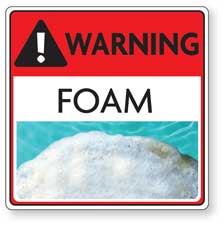In 1999, a large flower and consumer show was held in the Netherlands. One vendor set up several display spas. No body added any chlorine to the spa water, nor did anyone remember to test it. At least 188 people developed Legionnaires’ disease or Pontiac Fever; 15 of them died.
Outbreaks of recreational water illness don’t just “happen.” Nearly everyone, including the well-known case above, has some advance indication. Recognizing and reacting to these warning signs can prevent nearly all recreational water illnesses.
The following stories may seem sensational. They are not. They are just typical incidents that happen when no one is watching. How well-trained are the off-hours and weekend employees at your facility? Does your staff know the warning signs? Here are six to be on guard for — and what they may portend:
1 Sanitizer level. The concentration of chlorine or bromine is the most reliable indication of acceptable water quality. At least one-third of all the serious gastrointestinal RWIs (including E. coli O157:H7, Shigella, Giardia and Norovirus), all the Pseudomonas-caused rashes, and all the Legionellosis (Legionnaire’s Disease plus Pontiac Fever) would be completely eliminated if the water was properly sanitized at all times.
For instance, there was a rash outbreak at Colorado hotel in 1999. The pool and spa were plumbed on separate circulatory systems with automated cal hypo feeders. The facility was remotely monitored by a service company. The hotel’s weekend staff members thought the off-site monitoring company could add chemicals remotely, so they weren’t testing the water. The cal hypo feeder failed for 69 hours on a weekend.
As a result, 19 of 20 spa users that weekend developed extremely serious Pseudomonas rash, according to the journal Morbidity, Mortality Weekly Report. If the weekend staff had tested the water twice a day, the outbreak would not have occurred.
2 Foam. Pools are not supposed to be foamy. Spas have some foam, but not much. When pools are foamy or the spa foam does not dissipate within a minute or two, there is a problem.
Pool foam may be caused by an overdose of a quat algaecide (ADBAC type) or high levels of organic matter. Foam is a double threat. It concentrates the organic matter as well as any bacteria in the water. This concentrated mixture is then deposited onto the skin. This is not a good thing.
In 1998, a traveling youth hockey team checked into a New England hotel. Team members spent up to three hours in the pool. The water was so foamy, the kids had foam fights and made face masks with it. That same night, five of them had to be rushed to a local emergency room for treatment of an itchy, red rash. At least 17 bathers that night had symptoms including rash, sore throat, headache, chills, cough, chest tightness and difficulty breathing, according to a report in the journal Environment Health Perspectives.
There are three treatments for foam: defoamers, oxidization and water replacement. Defoamers work instantly, but the foam returns and they do not fix the underlying problem. Organics can be greatly reduced by oxidation. Effective treatments include quick-dissolving chlorine compounds (bleach, cal hypo, dichlor, trichlor granules or lithium hypo) and potassium monopersulfate (usually called “chlorine free shock oxidizer”).
When you see foam, it’s not a time to be frugal. Follow the instructions on the package label, and use the maximum dose listed. Water replacement should be considered, but it’s expensive and takes time. In the case of this particular outbreak, a temporary solution would have been to close the pool — but nobody at the hotel was even checking it.
3 Cloudy or off-colored water. Pool and spa water should look good enough to drink. When it isn’t, there is a problem.
A water slide in Utah was designed with two circulatory pumps. In early April 1982, one pump failed. On April 30, 1982, there were 650 patrons using the park when the second pump failed. The staff initiated work on the pump, but kept the park open.
By May 7, a total of 265 of the known users reported illness. Symptoms included rashes, headaches, muscle aches, red/burning eyes, fatigue, fever and earaches. All but one case was resolved without treatment; that one case required intravenous antibiotics. The water was turbid and foamy on the day of the outbreak, according to Morbidity, Mortality Weekly Report. Were employees so busy they could not see the turbid water?
4 Off odors. Properly maintained pools and spas should not smell. There are more than 200 halogenated disinfection byproducts that can be formed in pool and spa water. Many of these are volatile and have strong odors.
On Christmas Day in 2006, a 6-year-old boy was admitted to the ICU unit of a Nebraska hospital in severe respiratory distress. He was one of at least 25 people who developed respiratory symptoms after using the indoor pool at the hotel where they were staying.
The next day, the health department tested the pool and found 0.8 ppm free chlorine, 4.2 ppm combined chlorine and a pH of 4.2. It is quite likely that this pool was generating large amounts of nitrogen trichloride, a potent respiratory irritant. For at least 24 hours prior, hotel guests had been complaining about the smell. Some even requested rooms farther away from the pool. But the hotel service technician was not trained in pool operation.
5 Slime. Slime, or more correctly biofilm, is secreted by microbes to help them stick to surfaces. Every surface that has been moist for at least 12 hours has some biofilm. In well-maintained pools and spas, you should not be able to detect any slime — at least, not without resorting to fairly sophisticated microbial test methods. Slime provides a protected reservoir for microbes.
Pseudomonas aeruginosa, the cause of bacterial rashes, and Legionella pneumophila, the cause of Legionnaires’ disease, thrive in the slime layer of undertreated spas. When the sanitizer level in the water drops, bacteria in the slime layer enter the water.
About 10 years ago, I was assisting a colleague on spa service call. The owners had complained of pinpoint prickly rashes every time they used the spa. The water looked crystal clear. Before testing the water, I slid my hand down the side of the shell. The entire shell felt as if it were coated with a 1/8-inch-thick layer of warm pudding. Their rash was almost certainly Pseudomonas folliculitis.
Some part-time facilities only maintain the sanitizer level during periods of operation. This is the worst management practice you can devise. This encourages the formation of slime, and leads to spas such as the one I found.
6 Patron complaints. Symptoms take time to develop. Chemical rashes may occur in less than 30 minutes, but most take several hours. Bacterial rashes and gastroenteritis usually take more than 24 hours for symptoms to first be noticed. Most people are “non-reporters.” They won’t report adverse reactions unless prompted, and some won’t report at all. But when patrons do complain, you should take those concerns seriously.
A California waterpark held a private swim party on August 20, 2004. The outbreak was first reported to the local department of health 10 days later by a parent whose child had diarrhea. She had contacted other parents and found that 11 other children from the party also had diarrhea. Sixteen employees reported illness before the party.Management knew that staff members were ill, yet allowed them to continue to swim, according to the journal Epidemiology and Infection.
Managing by complaints is reactive, not proactive. Reactive management is always too late.



